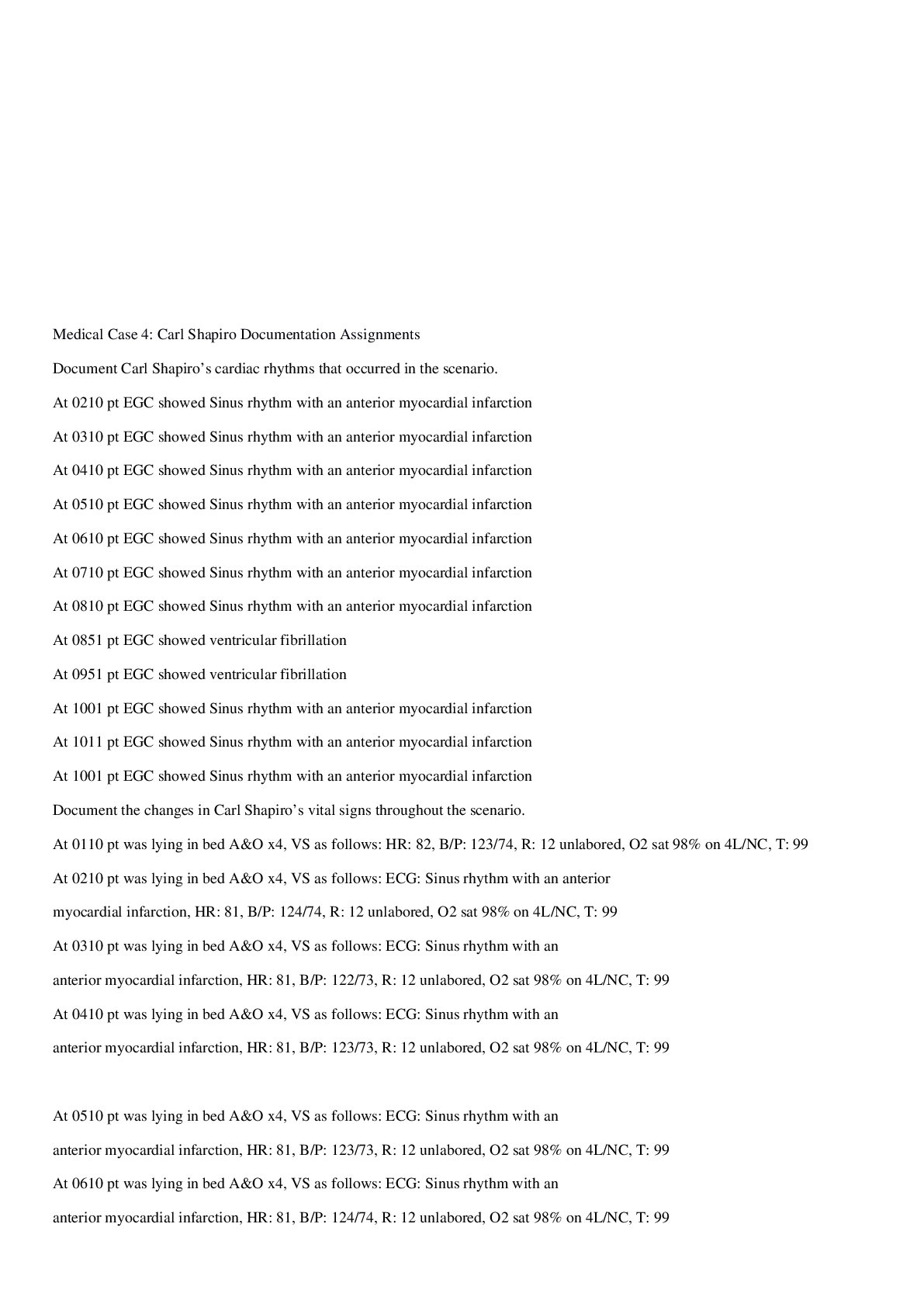*NURSING > Summary > RN Comprehensive Online Practice 2019 A Remediation (complete solution guide) (All)
RN Comprehensive Online Practice 2019 A Remediation (complete solution guide)
Document Content and Description Below
RN Comprehensive Online Practice 2019 A Remediation 1. DVT – heparin – elevated leg to reduce edema and further risk 2. Child safety a. No skateboarding under 5yo b. No sun between 1000 and 1400 c... . Cut hotdogs lengthwise 3. Infection prevention when on chemo a. No water or liquids at room temperature that have been out for over 1 hour b. Clean toothbrush in dishwasher once weekly c. Take temp once weekly and notify provider if over 100 d. Ambulate short distances to prevent pulmonary stasis and respiratory infections 4. 6m infant diet a. 1 Tbsp/year of age (in general) b. Under 12m – ½ to ¾ Tbsp appropriate c. 100% juice – 120 to 180 ml d (4-6 oz) after 6m 5. Mechanical restrains a. Don’t remove unless client calm, in control, and follows simple commands b. Assess physical needs, safety, comfort q 15-30 min and document c. New Rx q4 hr 18yo and older, q2 hr 9-17 yo, q1 hr under 9yo d. Staff remains continuously with client or constant viewing with audiovisual equipment 6. Umbilical cord prolapses a. Knee-chest position 7. True labor a. Cervix transitions to anterior position and begins to dilate in preparation b. Contractions primarily in lower abdomen and back c. Contractions intensifies with increased ambulation d. Cervix shortens and thins 8. Nurse manager changing scheduling system, action to facilitate a. Provide information about scheduling issues to the staff i. 1st stage of change process is unfreezing stage 1. Informing staff about issues increases understanding of why changes needed 9. Uric acid-based urinary calculi formation a. Can eat citrus fruits b. DO NOT EAT – liver & chicken (organ meats, which contain purine) and red wine the same 10. Estradiol teaching a. Headaches – indicate thromboembolic stroke 11. Multiple sclerosis a. Speech pathologist swallow study – dysphagia is complication b. Rest before eating – rest because of reported weakness and easy fatigue c. Thicken liquids before drinking – dysphagia 12. Chlorpromazine for schizophrenia – report to provider a. Greatest risk – injury from neuroleptic malignant syndrome i. High temp ii. Dysrhythmia iii. Decrease LOC iv. Labile BP 13. Maintain sterile technique with male indwelling urinary catheter a. Open outer flap away from body to prevent contamination of field by reaching over it when opening the remaining flaps b. Clean penis with dominant hand c. Don sterile gloves before touching any items in sterile field d. Place catheter tray on a work surface at or above waist level 14. Cranial nerve – optic II a. Clear objects from walking area 15. Hemolytic transfusion reaction a. Tachycardia b. Low back pain c. Hypotension 16. Child tonic-conic seizure a. Side-lying during seizure to maintain airway, decrease risk of aspiration, facilitate drainage of oral secretions b. Rescue breaths after seizure if child does not begin having spontaneous respirations c. Obtain vitals and ECG following seizure 17. Gastrostomy tube for enteral feedings – medication admin a. Flush with at least 30ml water before and after meds to clear residual in tube b. Crush each medication separately from tube feeding formula c. Change feeding bag and tubing q 24-48 hr to prevent clogs and infection d. Give each medication separate to prevent clogging 18. Macular degeneration a. Decreased central vision i. r/t bleeding int the macula or yellow spots under retina 19. Warfarin instructions understood by patient a. Report change in color of stools i. Red, black, tarry indicates bleeding (AE needs to be reported) b. Acetaminophen increases risk of bleeding c. NO calcium supplements d. Maintain intake of foods with Vitamin K e. Daily blood draws for 1st 5 days to establish appropriate warfarin dosage 20. Cystic fibrosis – priority to report to provider a. Hemoptysis 275ml/24hr i. Indicates risk for hemorrhage b. Report fever – indication of pulmonary infection, but not priority over hemoptysis >275ml/24hr c. Report anorexia and weight loss – indication of pulmonary infection, but not priority 21. Turning patient on right side a. Place pillow under right arm – prevents internal rotation of left shoulder 22. Fractured femur – fiberglass leg cylinder cast for 24hr a. Risks i. Dry, itching skin – offer hair dryer to use on cool to blow air on the skin to relive itching, not priority ii. Swelling and pain – when leg in dependent position; elevate leg to reduce edema and pain, not priority iii. Skin breakdown – caused by wet cast; ensure drying (fiberglass cast is waterproof), not priority b. Heel reddened and tender – pressure injury; priority assessment 23. Hepatitis A a. Clean kitchen surfaces with hydrogen peroxide to kill virus and prevent transmission b. Encourage safe food handling with hand hygiene 24. Enoxaparin injection a. Subcutaneous tissue of the periumbilical area 25. Skeletal traction for femur fracture priority a. Reposition or check weights to relieve muscle spasms, not priority b. Provide analgesia to relieve moderate pain level, not priority c. Upper chest petechia i. Greatest risk is organ damage from fat embolism syndrome 1. Obstructs blood vessels of major organs (lung, kidney, brain) 2. S/S – petechiae upper torso, dyspnea, hypoxia, headache, lethargy, confusion 26. Lithium for bipolar – priority to report a. Confusion – early manifestation of lithium toxicity i. Monitor for additional indications of toxicity – coarse hand tremors, incoordination, ECG changes, sedation b. Expected AE and nonurgent – lethargy, polyuria, fine hand tremors 27. Tracheostomy care a. 1st - Remove inner cannula b. 2nd - Remove soiled dressing c. 3rd - Clean stoma with 0.9% sodium chloride irrigation d. 4th - Change tracheostomy collar 28. MDMA a. Diaphoresis b. Increased tactile sensitivity c. Lowered inhibition d. Chills e. Muscle cramping f. Teeth clenching g. Mild hallucinogenic effects 29. Misoprostol and on long-term therapy with NSAIDs for arthritis teaching a. Pregnancy test before taking if childbearing age – causes contractions b. Diarrhea c. DOES NOT coat stomach; reduces gastric acid secretion so ulcers can heal and reduces risk of new ulcers developing d. AVOID magnesium-containing antacids – increase risk of diarrhea 30. Hypokalemia a. Hypoactive bowel sounds (decreased gastrointestinal mobility) b. Muscle weakness and decreased DTR 31. Abruptio placentae [Show More]
Last updated: 1 year ago
Preview 1 out of 8 pages
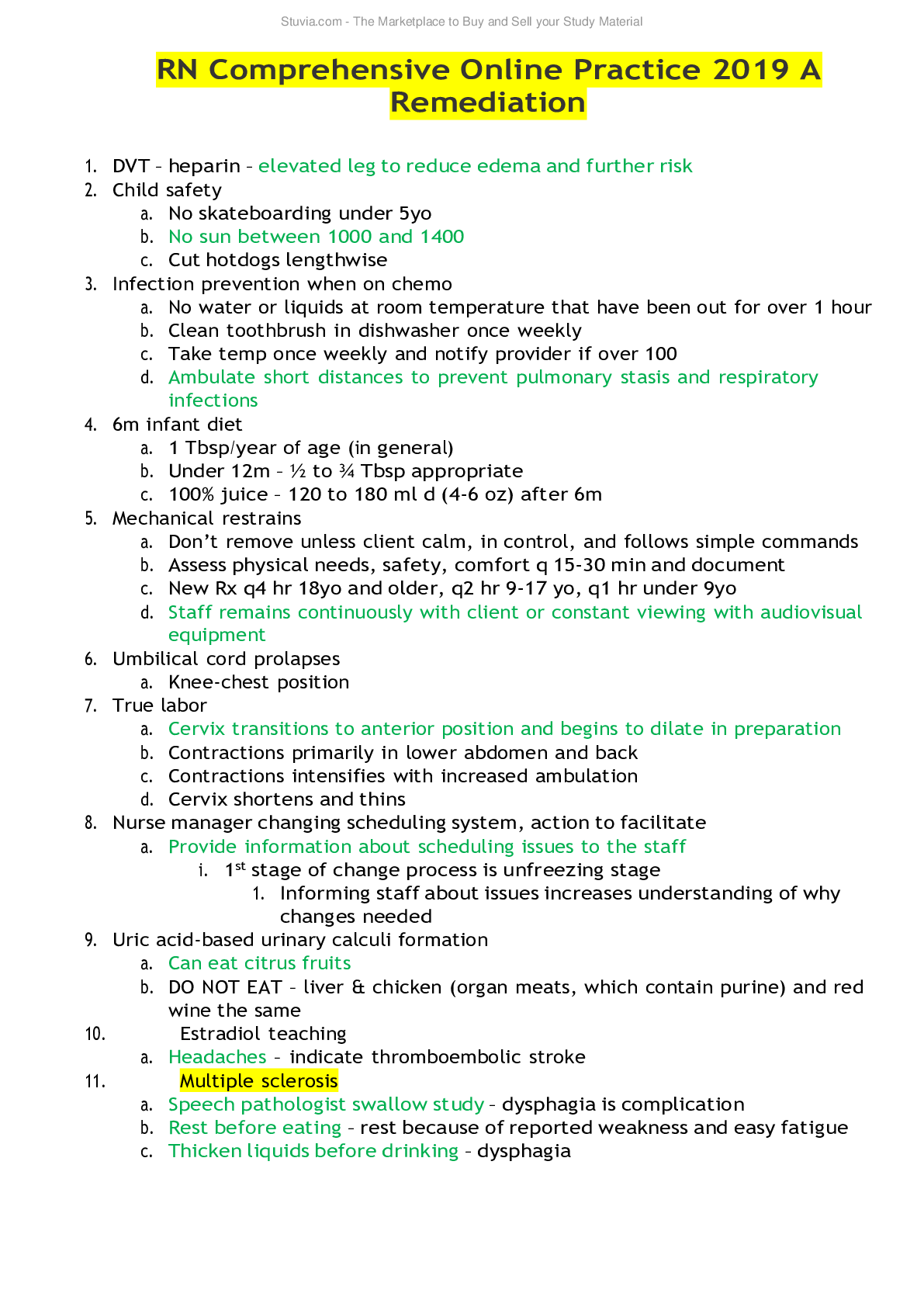
Reviews( 0 )
Document information
Connected school, study & course
About the document
Uploaded On
Jun 16, 2021
Number of pages
8
Written in
Additional information
This document has been written for:
Uploaded
Jun 16, 2021
Downloads
0
Views
48

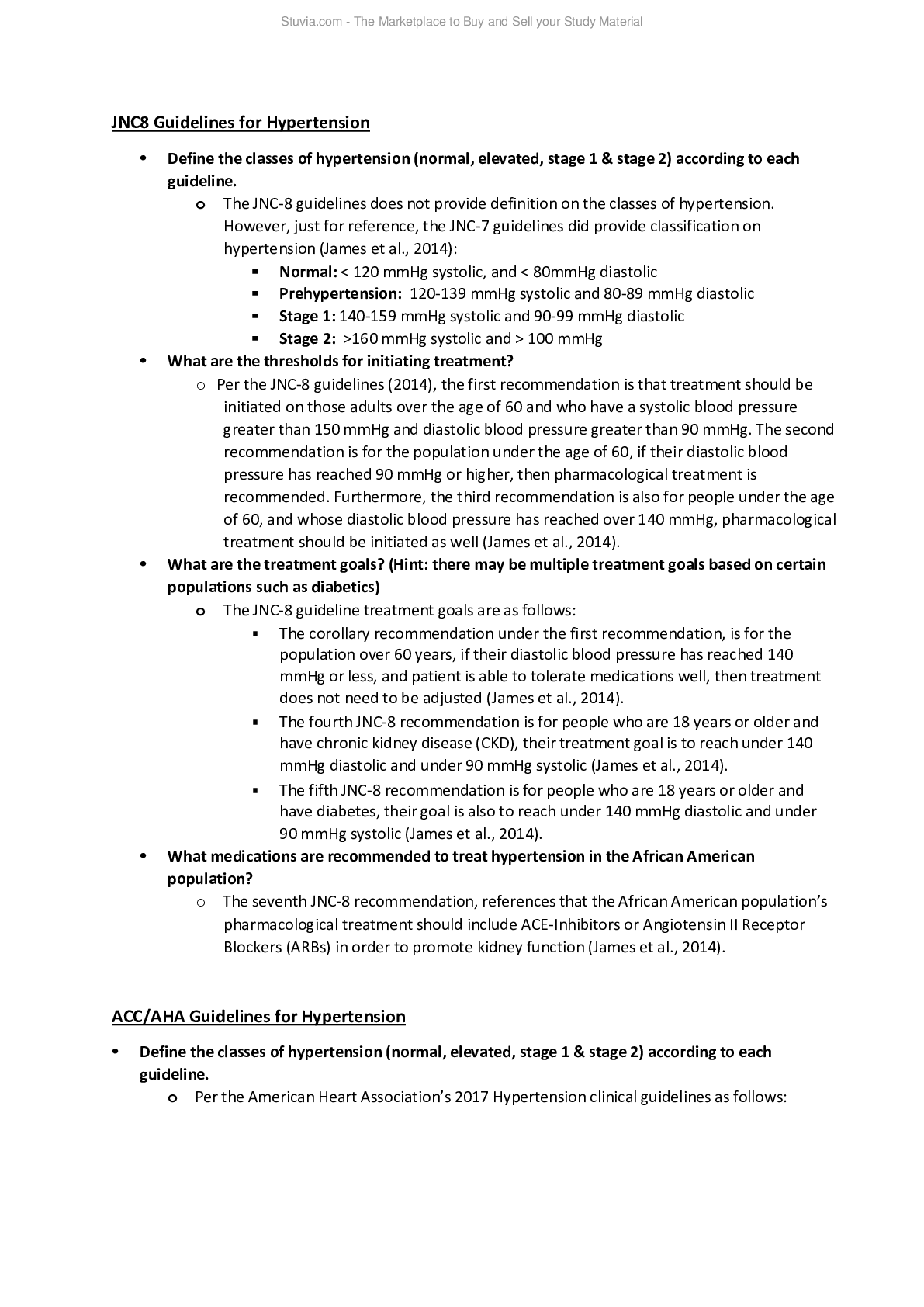
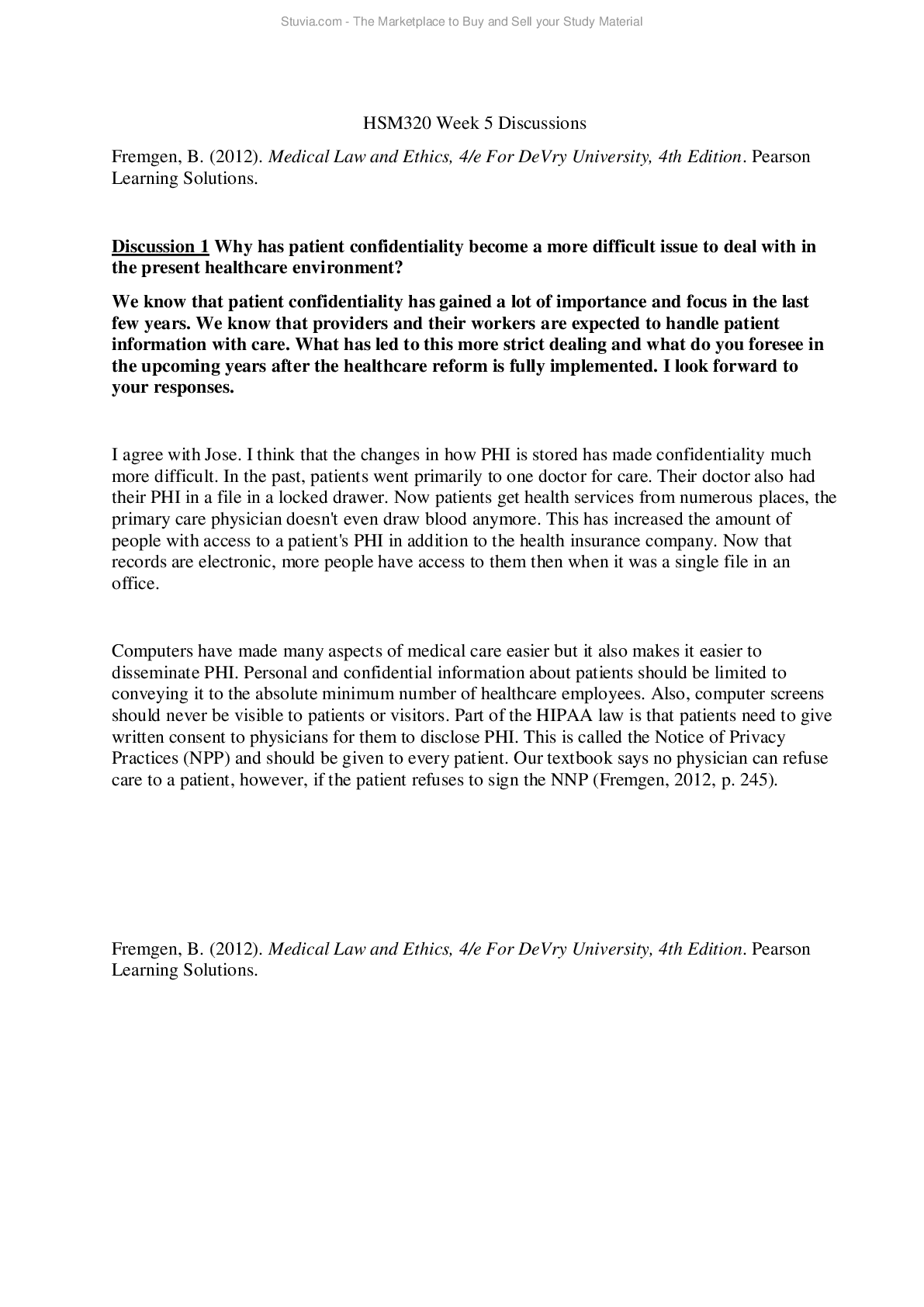
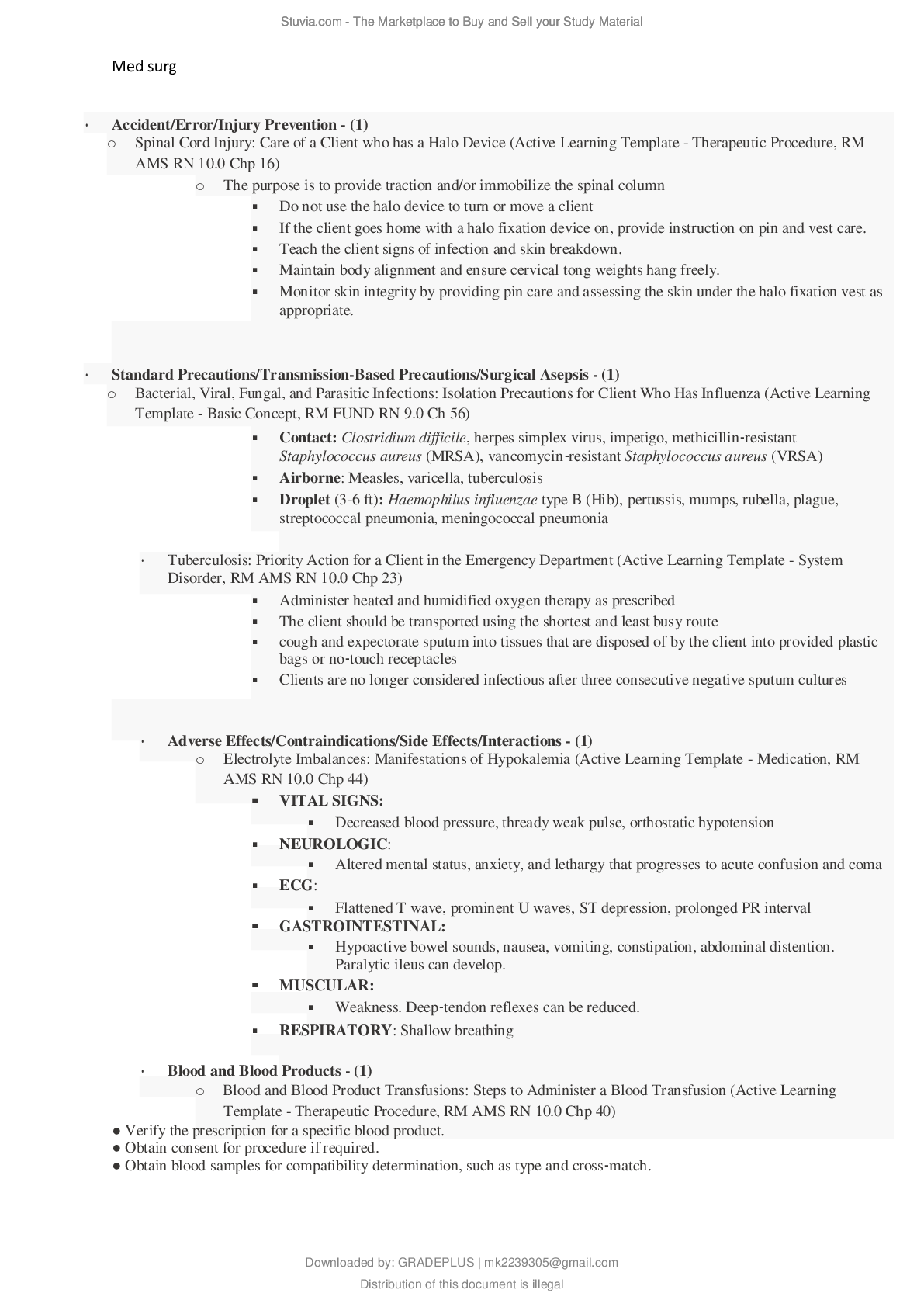


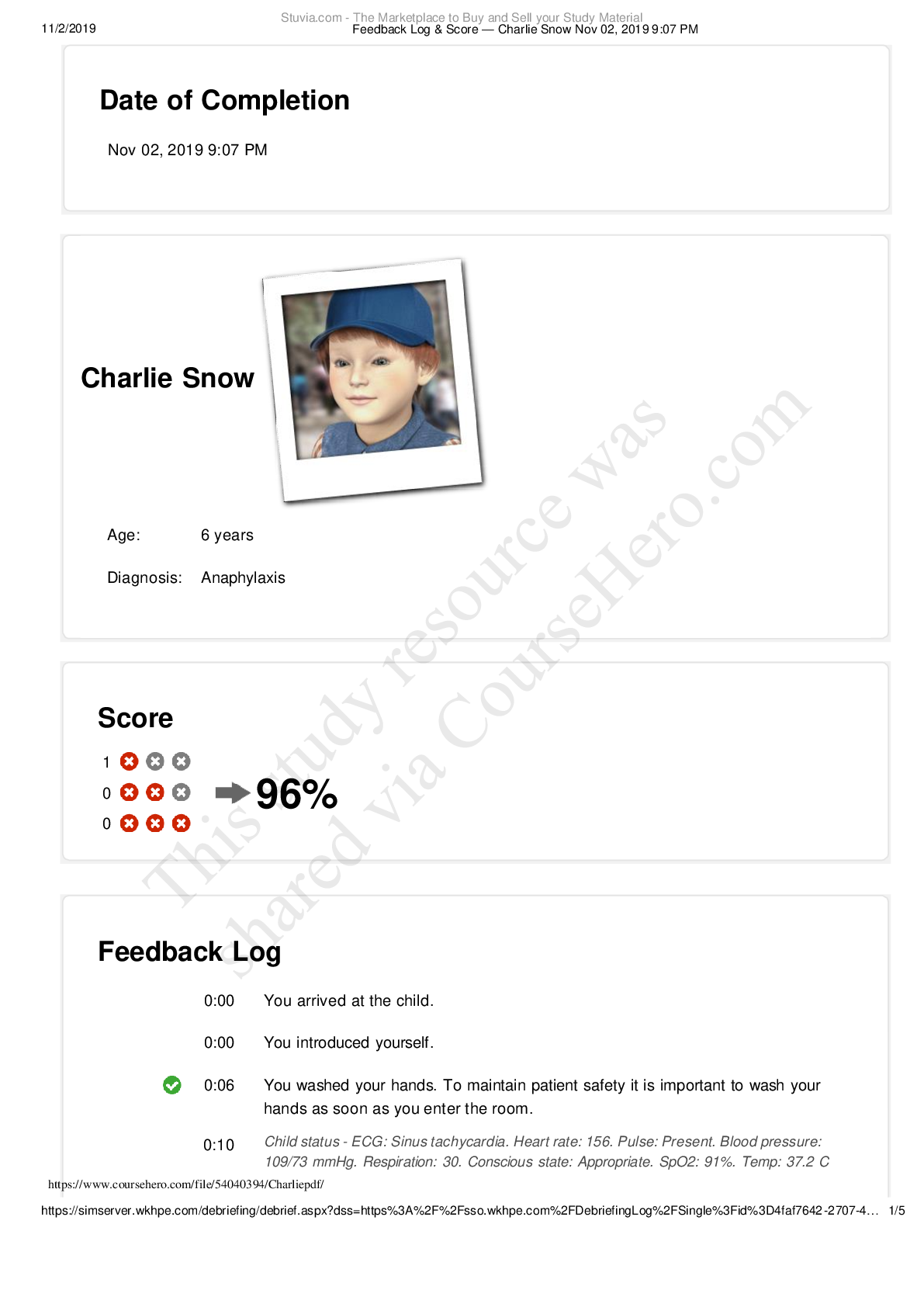
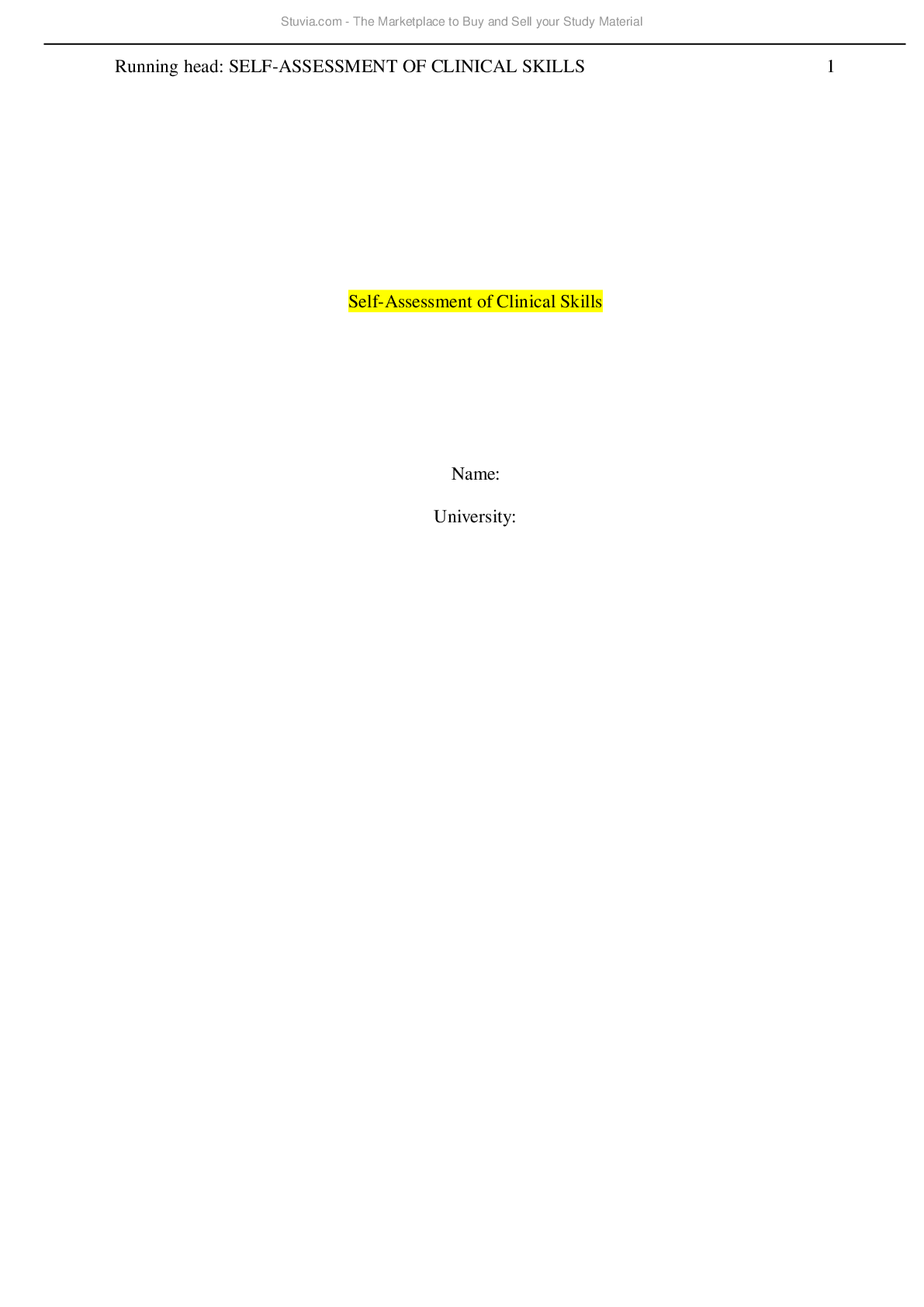


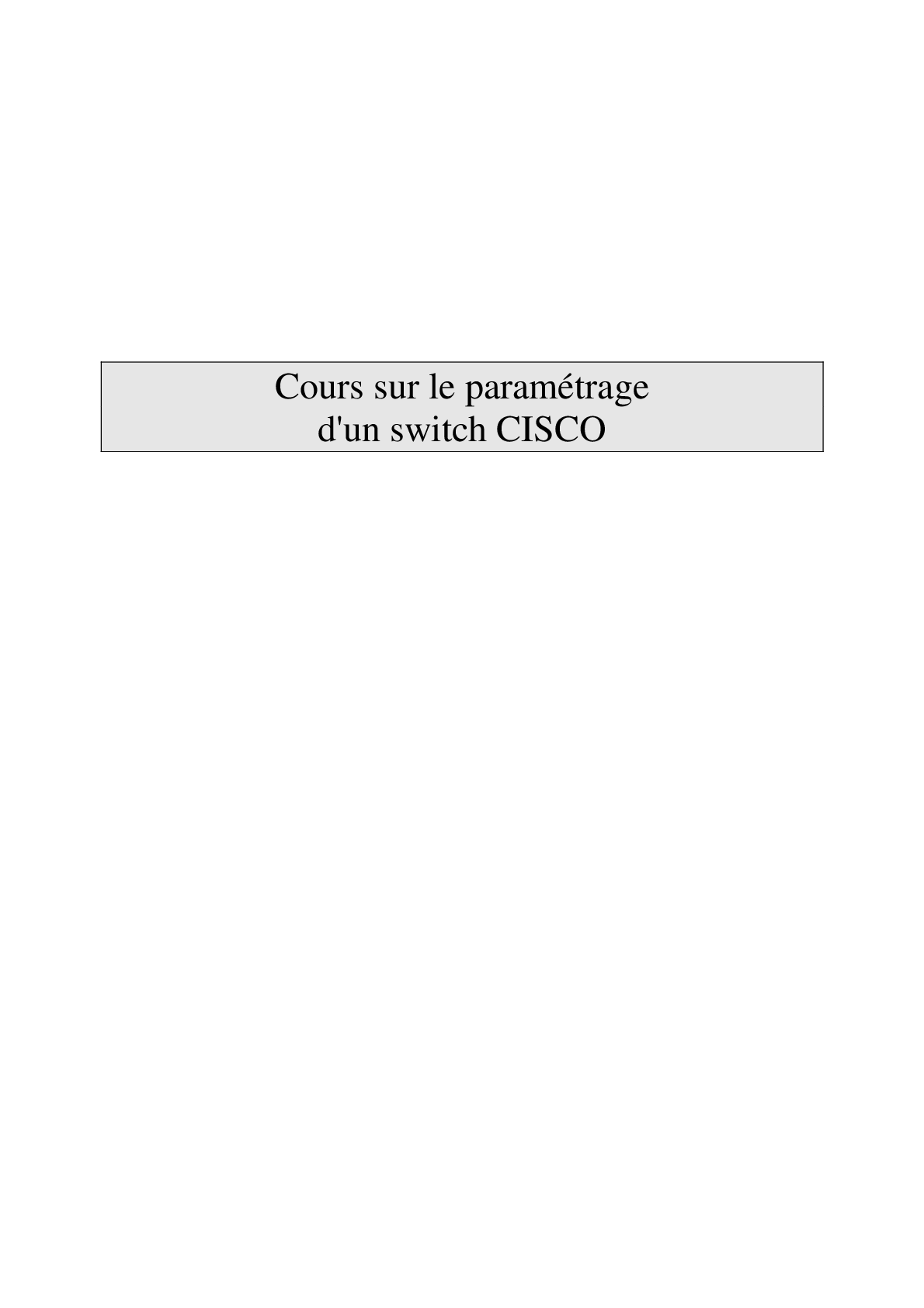
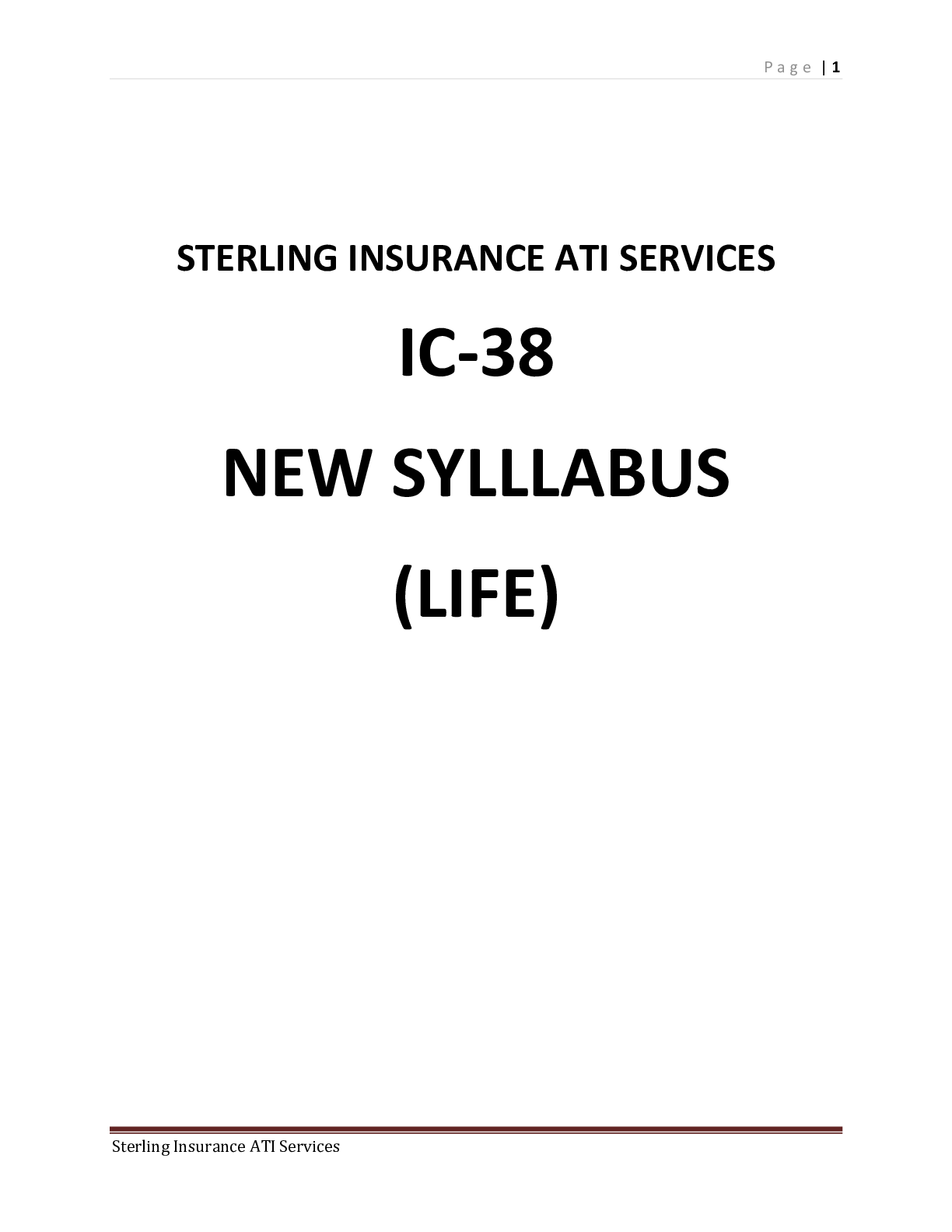
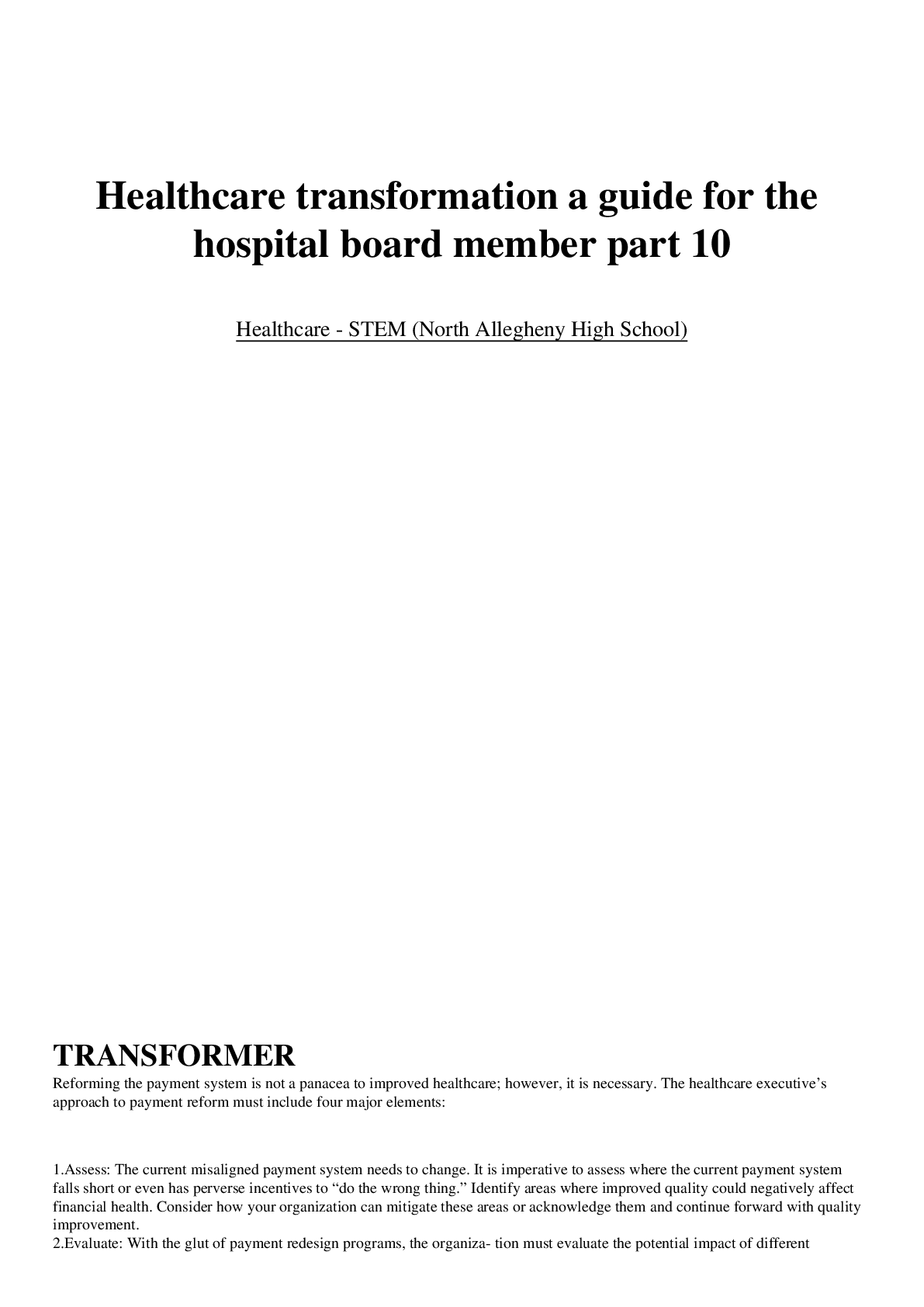


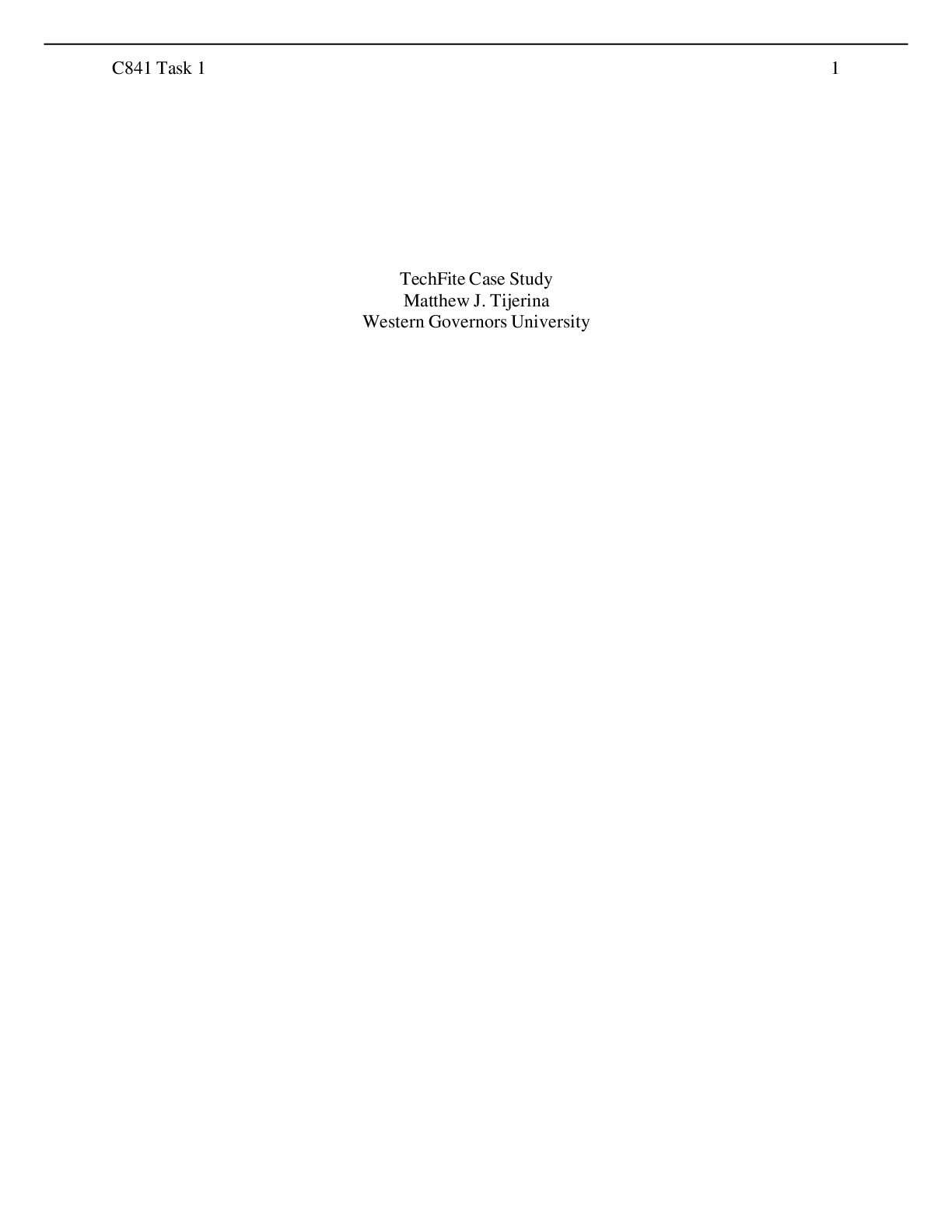
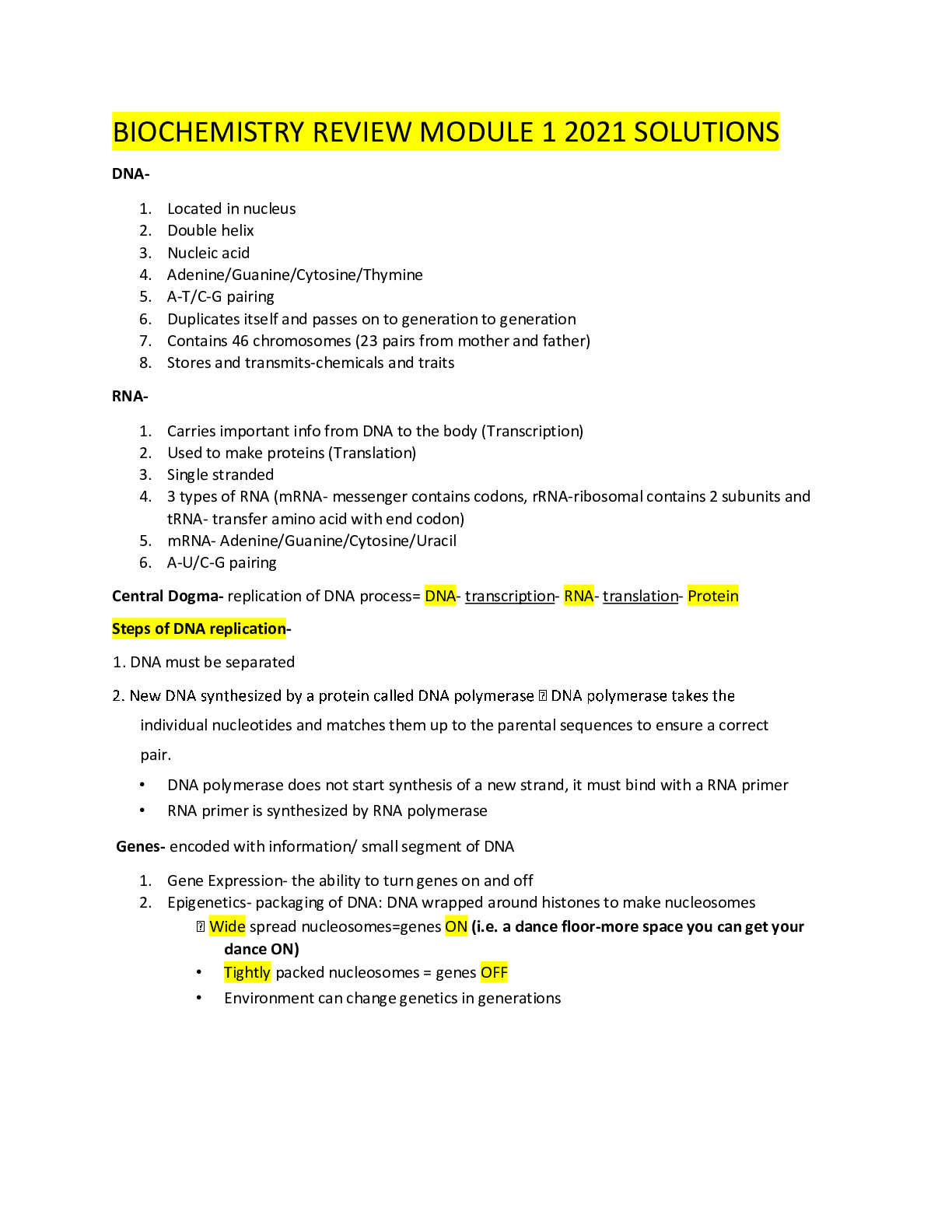
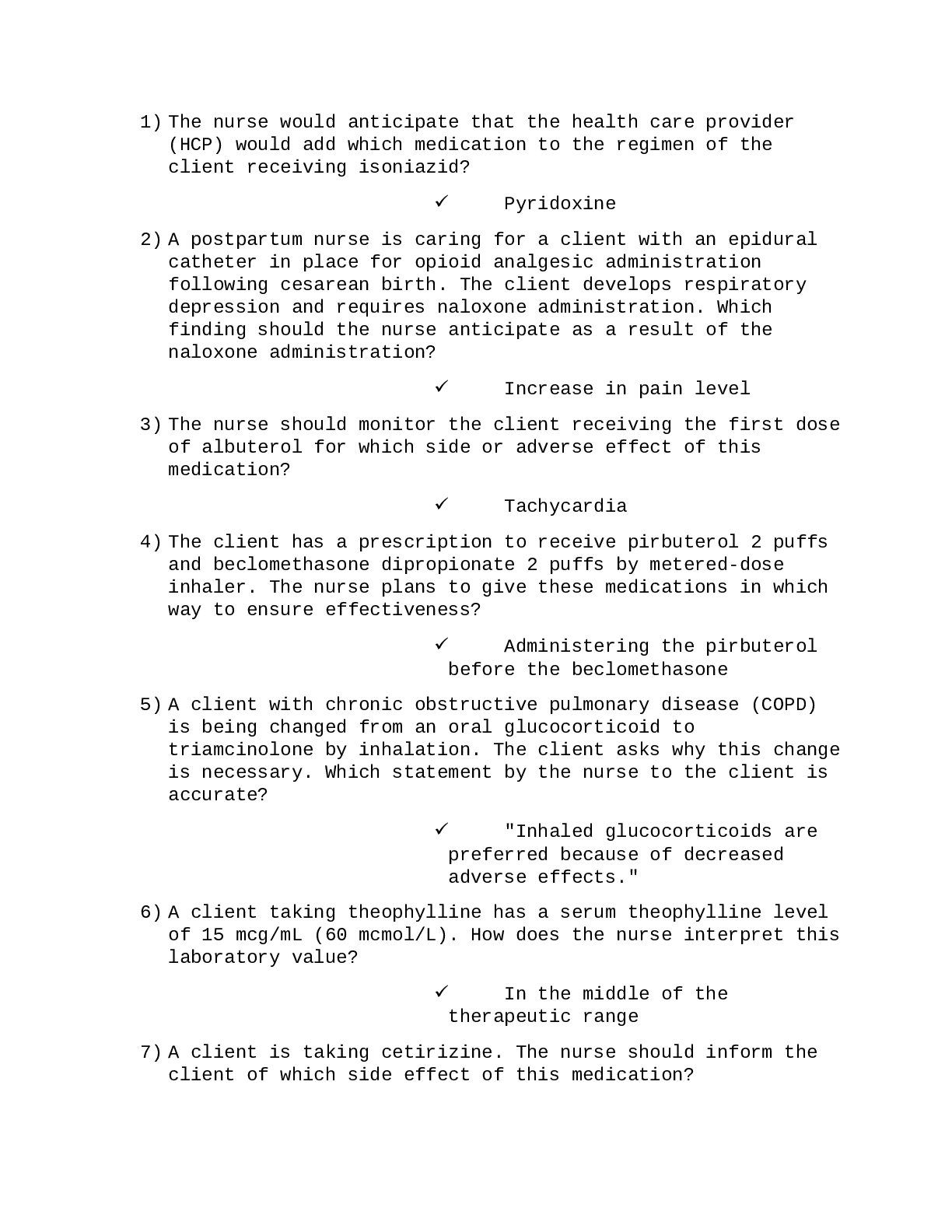
NSG110 AMERICANS RATE NURSES HIGHEST ON HONESTY, ETHICAL STANDARDS.png)




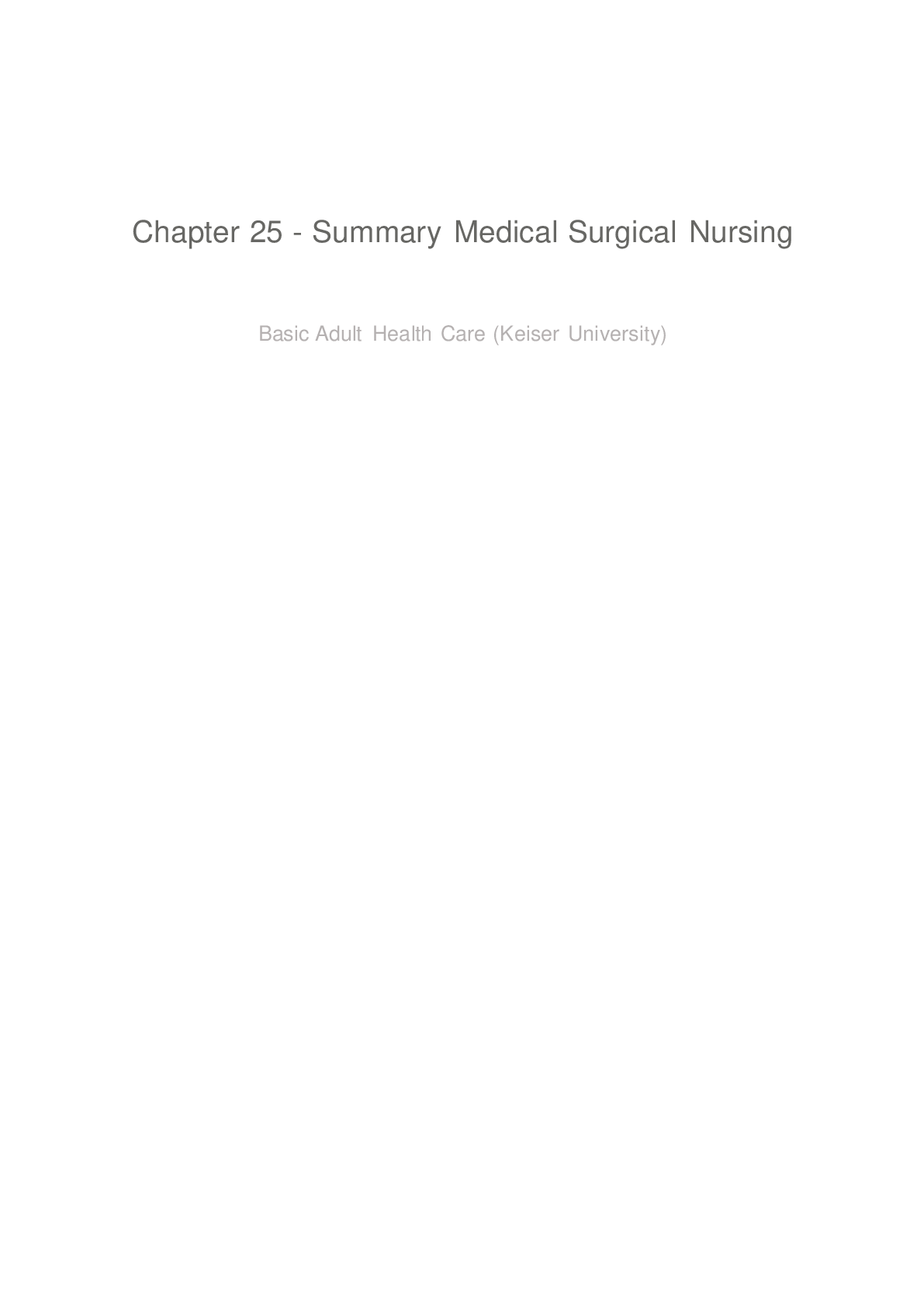


.png)
